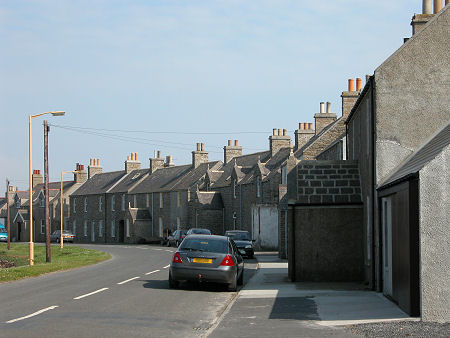 Whitehall on Stronsay, Founded by Patrick Fea |
Patrick Fea lived from about 1640 to 1709. He made his name as a privateer during the second Anglo–Dutch War and founded the settlement of Whitehall on the island of Stronsay. The wider picture in Scotland at the time is set out in our Historical Timeline.
Patrick Fea seems to have been born in Stronsay and apparently received a good education before, by one account, joining the Royal Navy as a midshipman or junior officer. During the Second Dutch War of 1665 to 1667 he played a role in dissuading the Dutch from pursuing their interests in the fisheries of Shetland and Orkney. Some accounts suggest that by this time he had been promoted to the rank of Lieutenant, the implication being that he served as a regular naval officer. The more popular story is that he spent the war as a privateer, in effect an officially sanctioned pirate preying on Dutch ships he found in and around the Northern Isles.
By the end of the war in 1667 Fea was wealthy enough to settle on Stronsay, and later in 1667 he married Barbara Traill. They went on to have four sons and three daughters together. In 1672 they built a new house together on Stronsay, which became known as the White Hall. The village which stands here today is as a result known by the surprisingly English sounding name of Whitehall.
Patrick Fea's life on Stronsay was an eventful one and he fell out with just about everyone on the island, and beyond, at one time or another. It is recorded that by 1679 he had appeared in court on no fewer than ten occasions, usually for acts of violence ranging from a serious beating of a neighbour whose animals had grazed on Fea's crops to threatening others with a cudgel or a sword. In 1694 Fea and his family were chased off the island by a band of men who had been antagonised by the family. One result was a further court case after Fea refused to pay property taxes for his estate on Stronsay during the period he had been unable to live there. In the early 1700s Patrick Fea made his estates over to his second son, Patrick Fea of Kirbuster. The older Patrick Fea continued to live in Whitehall until his death in 1709.
